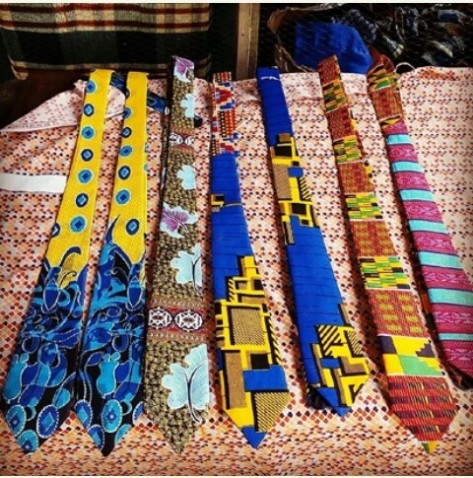
What informed your interest in art? The idea of sponsoring art or my interest and passion in art comes from collecting habit of appreciating art works. I have always appreciated art; and I can tell you that I am one of the major collectors of African arts in Nigeria and also a patron of art.
I can say that art for is life. I feel complete when I am in any art environment; any environment where art is being displayed, I feel highly complete and alive.
I am also a very big ambassador of creativity; anything that has to do with skills and talents, I support it heavily. So, art for me is something I have grown to appreciate and to love.
At what point did this your passion for the art started? What really inspired it?
I am not from an art family. My parents were not artists; they were not collectors. I don’t have any sibling who collects artworks; I don’t have any sibling who is an artist.
The passion and the love for art actually started because of my love for creativity, like I said. Anything that is creative, I see as art. Even good photography for me is art.
I always appreciated good and creative things. And that point at which I caught the bug, was when I see very beautiful art piece that I appreciate and I can’t go to sleep without thinking about it, actually started about 10 years. Somewhere in England, I went into a gallery and the attendant was very vast in and understood arts.
He made me to understand the different benefits of arts. So, since then I have grown to love it; I have researched it, I read it. I go to exhibitions, auctions, even when I didn’t have money, I go to exhibitions just to view; go to auctions just to view.
And then, with the kind of energy the people in the room exhume you will have no choice to catch the bug; it’s like a virus.
What motivated Frot Foundation commitment to sponsor the art exhibition titled ‘Insanity’?
The exhibition ‘Insanity’ is just part of it. The exhibition is an offshoot of our resolve to encourage arts in Nigeria and beyond the shores of Nigeria. From what I understand, from what I have seen in the arts and culture sector in Nigeria, there is a huge gap between the masters and the young ones.
So, I kept asking myself, when are we going to fill this gap? By the time these masters are getting too old to paint, what are we going to appreciate? Who is going to remind us of our heritage? Who is going to remind us of our purpose in life, which is appreciating creativity?
So, I decided that youth development is always the key to any vacuum. Like in sports, we focus on youth development; in art, we focus on youth development.
So, ‘Insanity’ actually started from a programme we did, called ‘Artists Connect’, where we invited artists from all over Nigeria; and we had about 250 attendees, and they came with their works.
It was a fantastic event; they knew each other, exchanged ideas; we enjoyed the works. And we did a shortlisting of about 20 artists and a further shortlisting of about 12 of them.
The whole idea of doing that was to focus on a small group and use it as a pilot programme to create a platform that talented youths can leverage on and have hope and grow, and launch themselves into the art world. So, Insanity came for the purpose of creating that platform and exposing these artists to the world.
Going by how involved you are by your interest in the sector, have you sponsored any exhibition before? And what are the criteria you use in picking the exhibition you sponsor?
This is our third exhibition this year alone. The recent solo exhibition Kolade Oshinowo, held at Terra Kulture, was partly sponsored by Frot Foundation.
Then the people I call the ‘12 disciples’ – Abiodun Olaku, Reuben Ugbine, Bunmi Babatunde, Edosa Ogiugo, Duke Asidere, Alex Nwokolo, Fidelis Eze Odogwu, Olusegun Adejumo, Sam Ovraiti, Diseye Tantua, Mufu Onifade, and Segun Aiyesan – they had a group exhibition titled Infinite Treasures II which was held at Terra Kulture recently. It was 100 per cent sponsored by Frot Foundation The criteria we use in picking the exhibition you sponsor, is value creation.
What do think about the lack of support from private sector for the arts, especially here in Nigeria?
The truth of the matter is I am not going to use the phrase ‘lack of support’, because we have a lot of the companies in the private sectors that are actually support art.
So, at the end of the day, it is about our value system; it depends on the values that these companies place on arts. I can tell you that it could be better. I expect a lot more, but I totally s a y t h e y don’t sup-port.
I know a lot of companies that do support arts heavily; they sponsor exhibitions, they attach their names to exhibitions and auctions. That is encouraging, but, like I said, I expect a lot more from the private sector.
But then again, the awareness is gradually increasing; even the appreciation of arts in Nigeria is gradually increasing. We have a lot of young people, and people under the age of 50s that are beginning to be art lovers in Nigeria.
What is the next stage for Frot Foundation in terms of sponsorship for the art sector in Nigeria?
We can only get bigger. Like I said, ‘Insanity’ was created as a platform for future events like this. We have a lot of young talented Nigerians who saw the works featured in Insanity, and said to themselves: ‘I can even do better.
Thank God there is a platform I can showcase my talent and my work’. So, there is going to ‘Insanity’ 2017 and ‘Insanity’ 2018. So it’s now a platform that every young artist will be looking forward to, to showcase as an opportunity to see what they can do.
My biggest role in this whole art scenario is to see private museums springing up, and will be open for the public to see how deep and rich our cultural heritage is. Your support for the arts appears to be tilted more in favour of the visual art.
Does the foundation also support other areas of the arts, like the performing art for instance? Yes of course. Like I said, anywhere help is needed as little as we can, as much as we can, we always lend a hand because we believe in our mantra which says: ‘every little counts.
It does not matter the amount; it is about the principle behind it. So, for the performing arts, of course we have a hand in that. For us art is art, as long as it promotes our cultural heritage.
The foundation is focused on four cardinal areas which is water, education sports and arts.
Fort Foundation tends to be there when help is needed, but our major focus, like I said, is water, education, sports and arts. Education in the primary education, providing infrastructure, providing the right learning environment for primary schools, because I believe that is the foundation of education.
The foundation provides infrastructure like tables and chairs, learning materials, and a conducive environment. Outside these four cardinal areas enumerated, Fort Foundation has been very vocal and very supportive in helping the health sector.
The foundation partners Noah’s Ark Foundation for Sickle Cell, also a partner to Cancer Aware Nigeria. We have sponsored several events, promoting awareness in sickle cell and also providing their monthly drugs.
For Cancer Aware Nigeria, our aim is to continue to educate the Nigerian public because we realised that women are dying by heavy numbers every day. We also realised that the major reason is ignorance; they don’t even know what to look out for.
So, with this education and this campaign, we are doing right now from this leaflets you are seeing we believe and hope that the education will spread far and wide even to the rural women; so that prevention is going to be better than cure.
Outside that we have a passion for providing a hand in any work of life that needs help – personal medical attention for people with illness who cannot afford medical attention, we sponsor that. We are also strategic partners with the Lagos Motherless Babies Home in Lekki.
Right now we are working heavily on providing boreholes – 10 boreholes – for the Internally Displaced Persons (IDPs) in the North-East. And our slogan is very simple: ‘Every little counts’. So every little we can,we will always be there
6.714010
3.515946






























